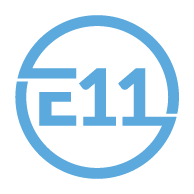This is the fifth installment article in a series of articles addressing Crime Prevention Through Environmental Design (CPTED) in Government Facilities. Note that all the strategies mentioned throughout the articles presented can be applied to a variety of facilities and organizations.
Understanding the Significance of Maintenance in Crime Prevention Through Environmental Design
In the sphere of Crime Prevention Through Environmental Design (CPTED), the role of maintenance is often understated yet crucial. Anchored in the “Broken Window Theory,” which posits that visible signs of neglect, such as broken windows, graffiti, or overgrown landscapes, can fuel further criminal and anti-social behavior, maintenance becomes a key player in the CPTED strategy.
The essence of maintenance in CPTED lies in promoting a sense of care. Regular and diligent maintenance of a space sends a clear message that the area is monitored and cared for, thereby deterring potential criminal activities. This perception of vigilant oversight significantly increases the likelihood of offenders being caught or confronted, acting as a powerful deterrent.
Furthermore, effective maintenance plays a pivotal role in enhancing other core principles of CPTED. It ensures that natural surveillance measures, such as lighting and clear sightlines, are consistently effective. Well-maintained lighting is crucial for visibility, especially during nighttime, while keeping landscapes clear and tidy preserves essential sightlines, both of which are vital for effective surveillance and access control.
The impact of maintenance extends to both perceived and actual safety. From a perception standpoint, a well-maintained environment significantly boosts the feeling of safety among users. People are naturally more inclined to frequent and engage with spaces that are orderly and well-cared-for. Visible maintenance efforts also reassure the public and employees about the security and active management of a facility.
In terms of actual safety, regular maintenance is key in promptly addressing potential security risks. This includes fixing broken fences, ensuring that lights are functioning correctly, and keeping surveillance mechanisms unobstructed. By reducing hiding spots and potential escape routes, proper maintenance directly contributes to mitigating security vulnerabilities.
The importance of maintenance in CPTED is illustrated through various real-world applications, particularly in government facilities. City parks and public spaces near government buildings, for instance, undergo regular maintenance to ensure clear visibility and overall environmental upkeep. This includes tasks like tree trimming, lighting repairs, and graffiti removal, which enhance both safety and aesthetics.
In government office buildings, routine checks and maintenance of surveillance systems, lighting, and access control mechanisms are standard practice. These measures ensure the functionality of security systems and the elimination of blind spots caused by overgrown foliage.
Courthouses and judicial centers exemplify high standards of maintenance, focusing on clear signage, well-lit entrances, and unobstructed walkways. Maintenance crews in these facilities are often tasked with immediate repairs to prevent any security lapses.
Similarly, maintenance is a critical aspect of security in transportation hubs near government areas. Metro stations or bus stops close to government facilities are maintained to ensure safety, orderliness, and functionality, contributing to the overall security of the area.
Additionally, public housing near government offices often receives regular maintenance as part of community safety initiatives. Regular trash removal, fixing broken amenities, and ensuring communal areas are clean and well-lit are part of these efforts.
In these contexts, maintenance transcends beyond aesthetic appeal and emerges as an integral component of a comprehensive security strategy. Regular and visible maintenance efforts in government facilities and their surrounding areas convey a strong message of order and control, significantly contributing to both perceived and actual safety.
If your Municipality wants to learn more about this topic and read the full article version visit here. Feel free to contact me directly at [email protected] for further assistance.











.jpg)



